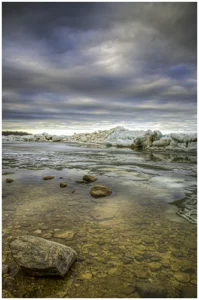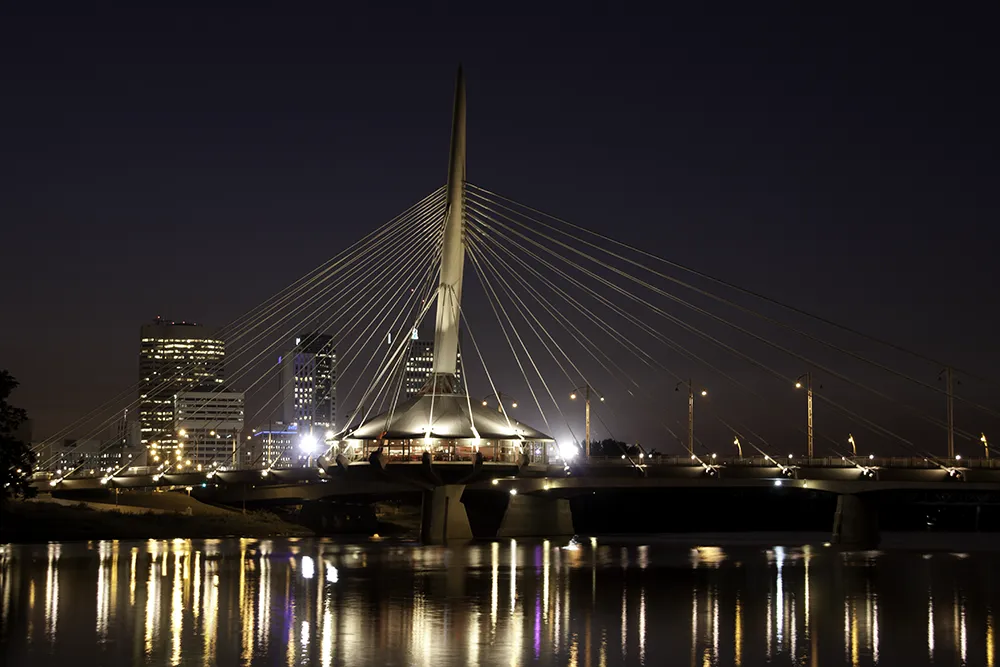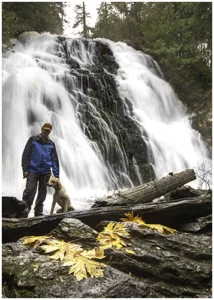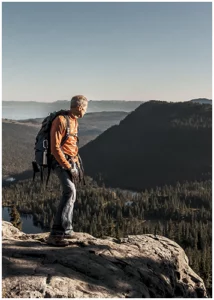
ON1 NoNoise AI Review: Eliminate Noise & Sharpen Your Photos
Are you tired of noise or grain messing up your photos? ON1 NoNoise AI could
Grand Opening & Black Friday Sale = 50% Off


Landscape photography offers a unique opportunity to capture the beauty of our world, and incorporating reflections can elevate these images to art.
Imagine a calm lake at dawn, with the sky’s mirrored in the water. It’s surreal and beautiful. Reflection photography lets us see the world’s beauty in a new way through the surface of the water.
Exploring reflection photography can change how you see landscapes. It’s for everyone, whether you’re new or experienced. This article will teach you to capture light and reflection. Let’s discover how nature’s mirrors can make your photos stunning.
Reflections in landscape photos add depth and symmetry. They make your images more stunning by incorporating reflections in the water.
Adding natural reflections to your photos can make them mesmerizing, especially in still water. Reflective surfaces like water or glossy terrains highlight symmetry and textures. They also bring a sense of calm and wonder.
There are many reflective surfaces to try in landscape photography:
To capture clear water reflections, follow these techniques:
Whether it’s a wide lake or a small puddle, the right approach makes your photos enchanting by capturing the reflection in the water. It turns simple scenes into beautiful symphonies of light and shadow.
Early Black Friday Save up to 35% On Photo RAW – Download your free trial today!
Transforming landscapes with reflective surfaces can add a surreal and impressive element to your body of work. By using natural reflective surfaces, you can create stunning compositions. These techniques can enhance landscape images in unique and creative ways.
Your composition is key to achieving impactful images. Frame your photos to include compelling subjects that work well when reflected. Use leading lines and the rule of thirds to guide the viewer’s eye toward the reflection, enhancing the overall effect.
Reflections in the water enhance landscape elements perfectly. Calm lakes, ponds, and even puddles can serve as natural mirrors, providing a clear reflection. Adjust your perspective and camera angle to optimize these reflections, making your shot stand out.
Incorporating actual mirrors into your photography can provide dramatic reflections. Place the mirrors in your scene to reflect vivid aspects of the environment. This method can emphasize symmetry and balance, turning ordinary settings into extraordinary visual experiences.
Choosing the right camera settings is essential for amazing reflective images. Adjusting shutter speed, aperture, and ISO ensures both reflections and landscapes are clear, making your photos awesome.
Begin by setting your camera to manual mode. This gives you control over settings. Use a slow shutter speed and low ISO for sharp reflections. Set the aperture to f/12 for sharpness across the scene.
Exposure is crucial for perfect reflective shots. Use exposure compensation to avoid underexposure. This ensures both reflections and landscapes are well-lit.
Bracketing exposures by taking multiple shots helps in post-processing, giving you more flexibility.
Filters like neutral density (ND) and polarizers are essential for water reflections. A polarizer reduces glare and enhances colours, making the reflections more vivid.
Neutral density filters allow for longer exposures, ideal for smooth water surfaces.
| Settings | Purpose | Adjustment Tips for Clear Reflections |
|---|---|---|
| Shutter Speed | Controls the exposure duration | Use a slower shutter speed for smoother reflections |
| Aperture settings | Determines depth of field | Set to f/8 for balanced sharpness and to capture the surface of the water effectively. |
| ISO | Reduces glare and enhances colours | Rotate to achieve desired effect |
| Polarizer | Reduces glare and enhances colours | Rotate to achieve desired effect |
| Neutral Density Filter | Allows for longer exposures in bright light | Choose ND strength based on lighting conditions |

Photography shows the amazing dance of light and shadow, best seen in landscape reflections. Adding reflections in the water to your photos makes them more engaging and visually striking. With careful planning and technique, you can create stunning landscapes that capture the viewer’s attention and inspire thought.
Adding reflections to your landscape photos opens up new creative avenues. By focusing on natural reflections in water, you can create scenes that feel magical. It’s important to balance the original and reflected images well. Adjusting your camera and using polarizing filters can help achieve this balance.
Reflective landscapes can grab the attention of viewers in exhibitions. Highlighting these shots in your work adds depth and beauty. Arranging your photos to move from regular landscapes to reflective ones creates a powerful experience for the viewer.
Reflections, especially of rivers and lakes, have a big impact on how viewers see them. They often bring a sense of calm and thoughtfulness. Reflections that capture our emotions make us appreciate the scene more deeply. Knowing these characteristics will help you create photos that connect with people on a deeper level.
Here’s a look at some techniques and how they affect your art:
| Technique | Effect on Artistic Landscapes | Viewer Perception |
|---|---|---|
| Polarizing Filters | Enhances clarity and contrast | Creates sharper, more defined reflections |
| Low Angle Shooting | Captures wider reflection | Generates a more immersive experience |
| Symmetrical Composition | Balances the visual elements | Evokes feelings of harmony and balance |
By learning and using these techniques, your work will connect with viewers and stand out in exhibitions.
...Bob
Adding reflections to your landscapes can change how people see your work. It adds mystery and depth. By studying water reflections, you can turn simple scenes into beautiful art. Let your photography show the world’s calm beauty.
through-out the article we talked about techniques for capturing stunning mirror effects using water, puddles, and even physical mirrors. By understanding light, composition, and camera settings, you can transform your scenes into captivating, artistic photographs. This approach adds depth and mystery, allowing you to showcase the serene beauty of the world through your lens and impress viewers with your unique vision.
Yes, water is indeed a reflective surface. Its reflective properties depend on factors such as viewing angle and surface stillness. Calm water acts like a mirror, perfectly reflecting the sky or surrounding landscape, which is often utilized beautifully in photography.
The role of water in the landscape is fundamental. Water sculpts Earth’s surface through erosion and deposition, creating diverse land-forms like valleys and deltas. Crucially, it sustains all ecosystems, providing essential habitats, regulating temperature, and enabling life, making it vital for every environment.

Are you tired of noise or grain messing up your photos? ON1 NoNoise AI could

Every time I get ready to photograph a waterfall, I feel a rush of excitement.

If you’re looking for an easy hike, well… this hike is not it! Most of